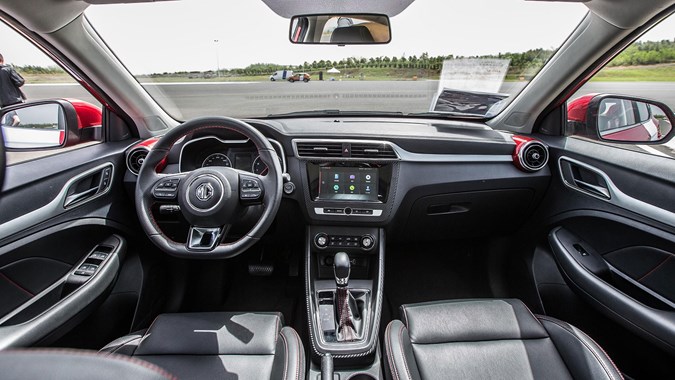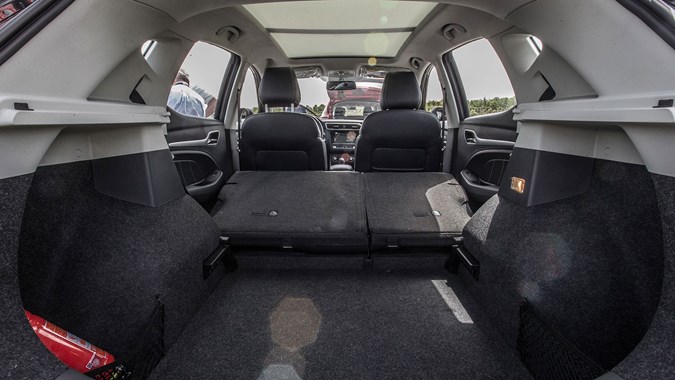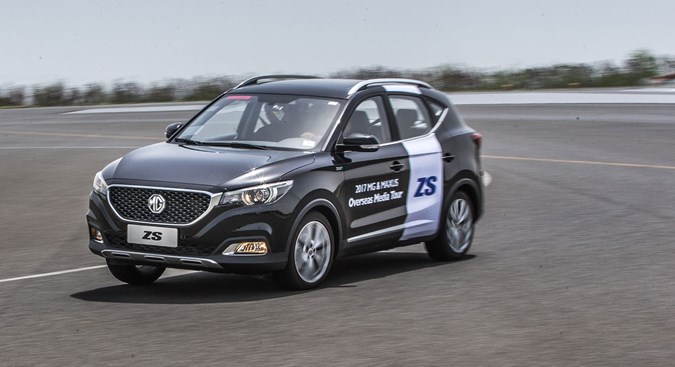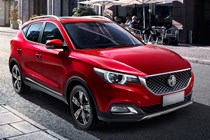
MG XS SUV review

Pros & cons
- Likely to be good value
- Interior is spacious
- Handling shows promise
- Some dubious interior plastics
- Tiny dealer network
Overview
Ignore what the badges and bodywork graphics proclaim, this is the new MG XS, a small SUV that will expand the MG range to three models when it arrives in showrooms towards the end of 2017.
The new car – it uses the ZS name in China where we’ve had an early drive of it – puts the Chinese-owned brand right in among one of the fastest growing sectors. It’s the perfect place for MG to be.
Cars like the Renault Captur, Nissan Juke and Ford EcoSport give that little bit of extra space, height and styling appeal over their supermini counterparts, but aren’t especially sophisticated, which could allow MG to compete on a level playing field.
New styling for a new direction
MG has changed its corporate styling for the XS compared with the larger GS SUV and MG3 supermini by swapping the aggressively pointed front end for a large, dished grille that makes it look less nose-heavy.
Overall, the styling of the car is successful, and wouldn’t look out of place in the line-up of Hyundai or Kia, for example. The worst complaint is that the wheels look small, despite being 17 inches in diameter.
Slim engine range and competitive prices
Of the two petrol engines it’ll be sold with, we briefly tried the 125hp 1.0-litre turbocharged three-cylinder mated to a dual-clutch automatic gearbox. This felt smooth, eager to accelerate and powerful enough in our short drive in a Chinese-spec version.
This engine was developed with MG owner SAIC along with General Motors and also appears in smaller Vauxhalls such as the Corsa.
This’ll be the more expensive option at an estimated £16,000. Entry cars will be sold with a 120hp 1.5-litre four-cylinder petrol with a manual gearbox, estimated to start from around £13,000. That’ll make it much cheaper than the competition; Ford’s EcoSport starts at £15,400, for example.
There’ll be no XS diesel.
What’s the MG XS like inside?
So far it looks like the XS’s greatest strength will be its interior space. Even with the front seat adjusted to suit a six-foot driver, a similar-sized passenger could easily sit behind with room to spare for the knees.

No capacity figure was given for the boot with the rear seats up (seats down it was 1,160 litres) but it looked very spacious and had room for a space-saver spare wheel underneath.
We’d guess it was approaching the 448 litres of the Honda HR-V. The rear seats didn’t fold flat, though.

The interior styling looked modern with some playful touches on the higher-end models like the protruding, body-coloured surrounds for the two side air vents inspired by jet engines. The 8.0-inch touchscreen display swiped left or right to reveal more screens and will include Apple CarPlay.
Other equipment on the Chinese Lux model we tested included keyless entry, a panoramic sunroof and two USB ports.
Some of the plastics such as the glovebox lid and the central cubby felt cheap, but not badly so. The handbrake wobbled from side to side a bit, though.
What is the MG XS like to drive?
A sprint round a coned-off course at SAIC’s giant test track near Shanghai hinted that the XS will at least match its competitors in terms of dynamic capabilities.

It felt eager to turn into corners and displayed commendable grip when pushed hard, even with the suspension set up more softly to suit Chinese tastes. This will change for UK-market cars.
 The Parkers Verdict
The Parkers Verdict
A more thorough test closer to September will reveal more, but this brief drive tells us MG should fare better with the XS than it has done with the GS, especially since a lack of a diesel is less of a concern in this sector.
MG’s problem remains a lack of awareness, poor residuals and thin dealer coverage, but cheap entry into a fashionable sector might just see the XS overcome those hurdles.



